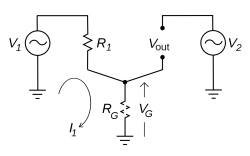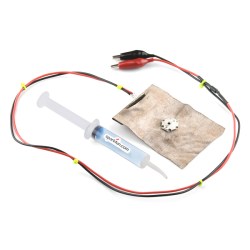After months of cross-disciplinary meetings, some of the largest professional associations just announced their plans to submit an entire standard set for engineers with egos too fragile to accept design criticism. The Special Snowflake Standard or S2 (in compliance with Godwin’s law) ensures compromised mechanical and electrical integrity by ignoring proper design methodologies for more fluid definitions of success. The Special Snowflake Standard allows the modern engineer greater flexibility in avoiding self-improvement in their field while maintaining an advanced level of apparent competency.
The Standard follows an ingenious randomly generated naming scheme to hinder cross-checking and look-up. The honesty being the only change from the current system. It took us a while to navigate the websites built to serve the standards, as they themselves were built to the W3C.S2.01.d.f4r.7 Special Snowflake Standard For Geriatric Exclusion From The Study of Modern Web Development and therefore were only accessible through the Gopher protocol running specifically on SPARC workstations.
Nonetheless, after working through multiple W3C.S2.u.r.f4.u17 Probably PEBKAC Self Exclusion Of Responsibility Standard errors, we found a few standards we’re really excited about. Let’s take a look at a the highlights:
ASME.S2.w31.f.u.4c.17 Sudden Completely Intentional Disassembly (SCID)

ASME.S2.w31.f.u.4c.17 SCID defines the methods and requirements for alluding to the complete intentionality of a SCID event. Subsection l.13.s contains suggested professional phrases for misdirection from conclusions of incompetence such as “If the supplier’s QC was better this thin wall would have a FOS of 3 instead of 0.25”. Subsection 3.v4.d3 describes the use of pocket silicate particulates to induce a temporary ocular deficiency in an aggressively competent reviewer.
IEEE.S2.111.11.0.1 Random Reset Enable

IEEE.S2.111.11.0.1 Defines the methodology in which an engineer may introduce random noise, power spikes, ground faults, etc into a circuit design to induce random unpredictable resets in a standard way.
ANSI.S2.f1.r.3.y0 Acceptable Conflagration Levels
ANSI.S2.f1.r.3.y0 Defines the acceptable levels of incendiary behavior in properly under-designed devices. Defined within are the procedures and standards for avoiding proper testing of flammability and a helpful subsection with advice on the procurement of renter’s insurance.
ASME.S2.333.w.33 Acceptable Wobbliness
ASME.S2.333.w.33 Defines the standard for acceptable regular deflection in machines. Subsections include preferable vibration enhancement using improperly specified materials and methods for choosing incorrect bearing types for early failure due to abrasive dust ingress.
IEEE.S2.b.1u.3.5m.0.k3 Standard for 450-495nm Color Band Particulate Emittance

IEEE.S2.b.1u.3.5m.0.k3 Defines the standard for emitting particulates from critical components due to poorly defined reference circuit design, peer neglect to supply requisite information, or poor quality control on the part of the manufacturer.
ISO/IEC.S2.n3k.b.34.r.d Standard for Relative Opinion Worth
ISO/IEC.S2.n3k.b.34.r.d Defines a standard by which to evaluate the worth of constructive criticism on software by the arbitrary application of metrics unrelated to the content of the criticism. Criticisms may now be safely ignored by the newly standardized metrics such as programming skill relative to the developer, relative amount of local units of currency accrued, bristliness of upper neck hair follicles, dapperness of discount trilby, patch count, time available for personal contribution, resonating ethicality of preferred use license (measured in milli-Stallmans), and amicability to use of commercially developed products (measures in µSofts).
At this point the server was taken down by a Nigerian hacker using an OLPC as defined in ISO/IEC.S2.7.3h.h.4.x. Either way, we’re excited for possibilities these new standards provide. In a drastic change from their previous operation the Special Snowflake standards have been released completely free of charge. We initially thought it was an error, but we’re now certain it’s completely standard.
















At least this one was more obvious than the Apple Device… Or was it?
I dunno, Brian did a great job with that one. I made it about halfway through his article before I caught on. Waiting to see if Mike posts one.
Yet another April’s joke?
I sincerely hope we see one from each of the regular writers. It’s a blast!
One of the better ones
Thanks:D
The mark of an awesome April Fools prank is that it is believable. It should get people thinking.
This is just someone throwing up on their keyboard and hitting submit.
In this day in age, I much prefer what HAD seems to do, and that’s mix obvious jokes with true articles with misleading titles.
Well, that’s just not how to make friends at all.
“bristliness of upper neck hair follicles”
Ha!
Pocket Sand! A widely underutilized technique.
ASME.S2.333.w.33 Acceptable Wobbliness must be the standard applied to the Big Bertha tunnel boring machine that broke down in Seattle, due in part to abrasive dust ingress in the bearings.
If only those annoying computer memory terms like megabinarybyte AKA mebibyte were April fool’s jokes.
engineers ego fragile, in one setence i knew it was a joke.
No, it’s real life.
Seriously… To 70% of Engineers. Suggestions, Enhancements, Expansions and Modifications all fall under Criticism. The bigger or more important the title; either the person is brilliant and hungry for knowledge OR has a hyper inflated sense of worth.
I fucking hate April 1st.
You should get a sense of humor, they’re nice.
Mine’s kinda dry and deadpan. I get it from my dad. Half the time I make jokes here half the crowd doesn’t realise.
April 1st is a bit rubbish cos it’s hoaxes when everyone expects a hoax, and it’s not always easy to be hilarious to a particular deadline.
Anyway… it’s not lack of a sense of humour. I just happen to enjoy moaning as well. That’s what we’re like where I’m from. Don’t take it too seriously, I’m not off banging my head against a wall in frustration.
BTW are you CWC-fan Dainbramage, or are there two of you?
Shouldn’t the author’s nam be Gerrit Goatse?
Oops! I thought this was a fake “April Fools” author name. I see now that there are multiple posts by this author. Sorry about making fun of the name…
Thanks for that, haha. Apology accepted:) No worries, but you get bonus history lesson! Accept my educational retribution! It’s pronounced “could-see-a” (said really fast) like you “could see a thing in the distance”. It’s super common in South Africa https://en.wikipedia.org/wiki/Coetzee , not so much in the US:P In fact, there are six of us, and I’m directly related to all of them.
This calls for the obligatory xkcd:
http://imgs.xkcd.com/comics/standards.png
Brilliant!
The only problem is that most electronics manufacturers have been operating under these standards for years.
“ASME.S2.333.w.33 Acceptable Wobbliness”
I begin to violate this standard after about four drinks.
Um…can I get this in a .pdf for the Standards Committee?
Extremely poor material. Especially if compared to the ‘write only memory’ datasheet of yore.
I understand someone at Hackaday had to give it a shot, nice try Gerrit, but I didn’t make it to the end of the first sentance before I scrolled up to take a look at the date line. I scrolled back down to fish reading the article, certainly most where suspicious by the end of the first paragraph.